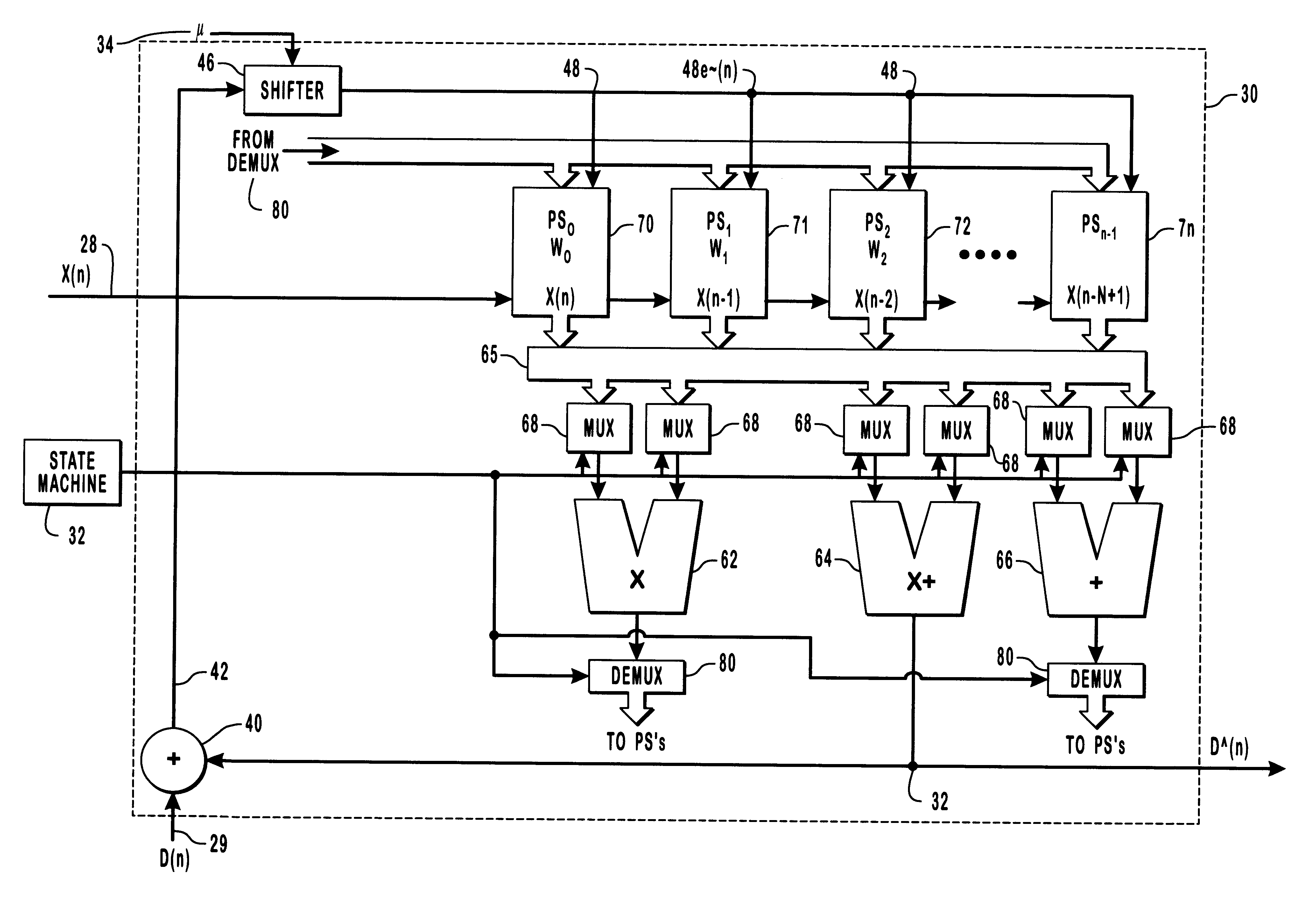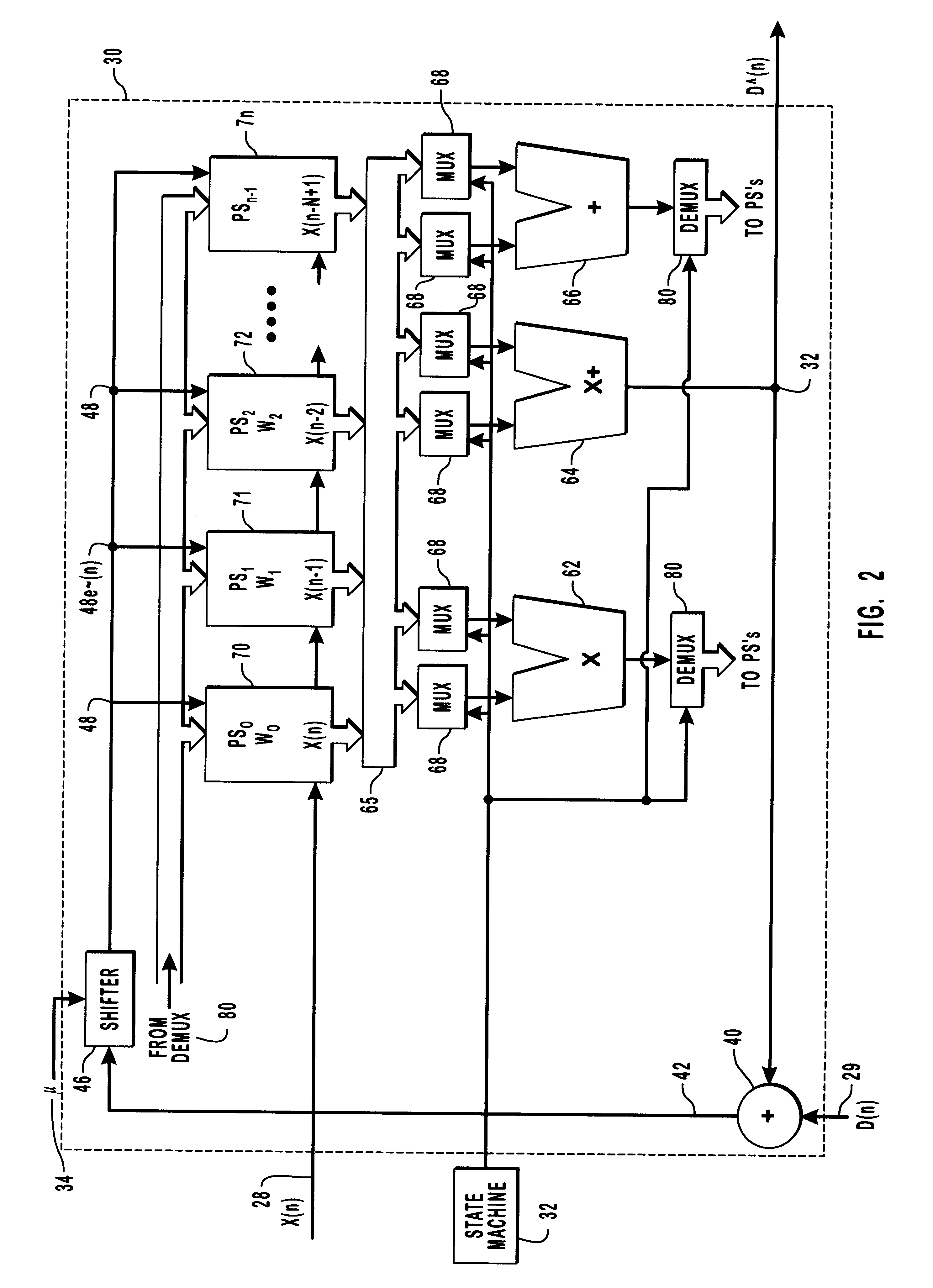Methods and apparatus for adaptive filters
a filter and filter technology, applied in the field of digital processing, can solve the problems of disadvantageous slow processing speed, inconvenient high-speed/precision use architecture, and low processing efficiency, and achieve the effects of saving physical space, saving time during manufacturing, and improving economic benefits
- Summary
- Abstract
- Description
- Claims
- Application Information
AI Technical Summary
Benefits of technology
Problems solved by technology
Method used
Image
Examples
Embodiment Construction
The following serves to illustrate one cycle of the iterative process performed by the foregoing architecture. The coefficients, W, of the adaptive filter 30 are updated within their respective state using present and previous inputs such that the ith processing state performs the following set of calculations:
W.sub.i (n+1)=W.sub.i (n)+X.about.(n); 1)
X.about..sub.i+1 (n)=X.sub.i+1 (n).times.e.about.(n-1); 2)
and
D .sub.i (n)=D .sub.i-1 (n)+W.sub.i (n).times.X.sub.i (n); 3)
where,
W(n)=W(n-1)+[.mu..times.e(n-1).times.X(n)];
D (n)=W(n)*X(n);
e(n)=D(n)-D (n);
and
e.about.(n)=.mu..times.X(n).
Then, at time n:
X.about..sub.0 (n)=X.sub.0 (n).times.e.about.(n); D (n)=0.
The processing states are as follows:
Processing State 0
W.sub.0 (n+1)=W.sub.0 (n)+X.about..sub.0 (n);
X.about..sub.1 (n)=(n).times.e.about.(n);
Processing State 1
W.sub.1 (n+1)=W.sub.1 (n)+X.about..sub.1 (n);
X.about..sub.2 (n)=X.sub.2 (n).times.e.about.(n);
D (n)=D (n)+[W.sub.0 (n+1).times.X.sub.0 (n)];
Processing State 2
W.sub.2 (n+1)=W.sub...
PUM
 Login to View More
Login to View More Abstract
Description
Claims
Application Information
 Login to View More
Login to View More - R&D
- Intellectual Property
- Life Sciences
- Materials
- Tech Scout
- Unparalleled Data Quality
- Higher Quality Content
- 60% Fewer Hallucinations
Browse by: Latest US Patents, China's latest patents, Technical Efficacy Thesaurus, Application Domain, Technology Topic, Popular Technical Reports.
© 2025 PatSnap. All rights reserved.Legal|Privacy policy|Modern Slavery Act Transparency Statement|Sitemap|About US| Contact US: help@patsnap.com



